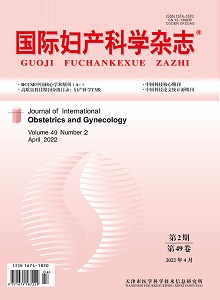Objective: To analysis the characteristics and risk factors of pregnancy related venous thromboembolism (VTE). Methods: The clinical data of 126 maternal diagnosed with VTE in Shanghai First Maternity and Infant Hospital from January 2019 to March 2021 were collected, the characteristics and risk factors of the cases were analyzed retrospectively. Results: Of the 126 VTE patients, 6.35%(8/126) occurred during gestation and 93.65%(118/126) occurred during puerperium, mainly within 7 days after delivery (94.92 %, 112/118). The location of VTE during pregnancy and puerperium was mainly in pulmonary vessels (73.02%, 92/126), followed by lower limb veins (16.67%, 21/126). The most common clinical manifestation of VTE was asymptomatic (88.89%, 112/126), followed by lower limb swelling (6.35%, 8/126). Among the risk factors of VTE, the highest proportion was cesarean section (74.60%, 94/126), followed by maternal advanced age (24.60%, 31/126), preterm birth (15.08%, 19/126), assisted reproductive technology conception (14.29%, 18/126), postpartum hemorrhage or blood transfusion (10.32%, 13/126), other risk factors accounted for less than 10%. The proportion of VTE patients with Royal College of Obstetricians and Gynaecologists (RCOG) risk factor score ≤3 was 84.13%(106/126). Conclusions: Obstetric VTE in our hospital mainly occurred during puerperium, and the highest risk period was one week after delivery. Asymptomatic pulmonary embolism was the most common characteristic. Risk factors assessment should be carried out for all pregnant women continuously, active prevention and early diagnosis and treatment should be carried out.

